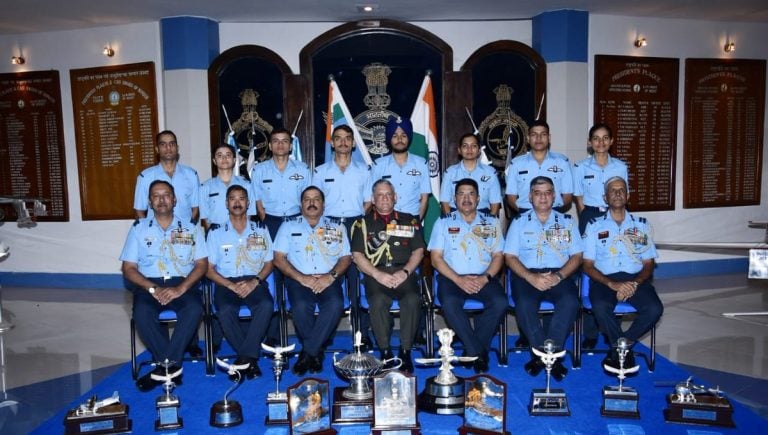India, with its diverse and ancient cultural heritage, boasts an impressive array of World Heritage Sites recognized by UNESCO. For AFCAT (Air Force Common Admission Test) aspirants, understanding these sites not only provides valuable insights into the nation’s history but also aids in developing a broader perspective. Let’s delve into some of these remarkable landmarks that showcase India’s cultural, natural, and architectural wealth.
AFCAT 1 2024 Exam Static GK – List of World Heritage Sites in India
- Taj Mahal, Agra: Undoubtedly one of the most iconic symbols of India, the Taj Mahal stands as a testament to eternal love. Built by Emperor Shah Jahan in memory of his beloved wife Mumtaz Mahal, this white marble mausoleum is an architectural marvel. AFCAT aspirants should appreciate its intricate details and historical significance, reflecting the country’s rich Mughal heritage.
- Jaipur City, Rajasthan: Known as the ‘Pink City,’ Jaipur is a living testimony to India’s royal past. The city’s architectural grandeur, including the Hawa Mahal, City Palace, and Jantar Mantar, earned it UNESCO recognition. Aspiring Air Force officers can explore the fusion of Rajput and Mughal architectural styles, gaining a deeper understanding of India’s cultural amalgamation.
- Khajuraho Group of Monuments, Madhya Pradesh: The Khajuraho temples are renowned for their intricately carved sculptures depicting various aspects of human life. AFCAT aspirants can admire the artistry and delve into the cultural nuances of ancient India through these temples, which showcase the intersection of spirituality and sensuality.
- Ajanta and Ellora Caves, Maharashtra: Carved out of solid rock, the Ajanta and Ellora Caves are a testament to India’s ancient artistry and craftsmanship. These caves depict Buddhist, Jain, and Hindu cultures, showcasing a diverse range of artistic styles. AFCAT candidates can explore the religious and artistic significance embedded in these UNESCO-listed sites.
- Qutub Minar, Delhi: Standing tall in the heart of Delhi, the Qutub Minar is a towering symbol of the Delhi Sultanate’s architectural prowess. AFCAT aspirants should delve into the historical narrative of this medieval structure, appreciating its intricate carvings and the cultural transitions it witnessed over the centuries.
- Rani ki Vav, Gujarat: Recognized for its exceptional stepwell architecture, Rani ki Vav is an underground water storage system located in Patan, Gujarat. AFCAT candidates can explore the precision and scientific acumen behind this ancient structure, showcasing India’s advanced engineering capabilities in the past.
- Kaziranga National Park, Assam: For those interested in India’s rich biodiversity, Kaziranga National Park is a must-mention. Home to the endangered one-horned rhinoceros, this UNESCO site provides an opportunity for AFCAT aspirants to understand the importance of wildlife conservation and the role of the Indian Air Force in protecting the nation’s natural treasures.
Conclusion:
In preparing for the AFCAT, aspirants should not only focus on the technical and strategic aspects but also appreciate the cultural and historical tapestry that India offers. The UNESCO World Heritage Sites mentioned above serve as windows into India’s past, showcasing the nation’s resilience, diversity, and cultural richness. By understanding these sites, AFCAT aspirants can develop a holistic perspective, essential for future leaders in the Indian Air Force.



















